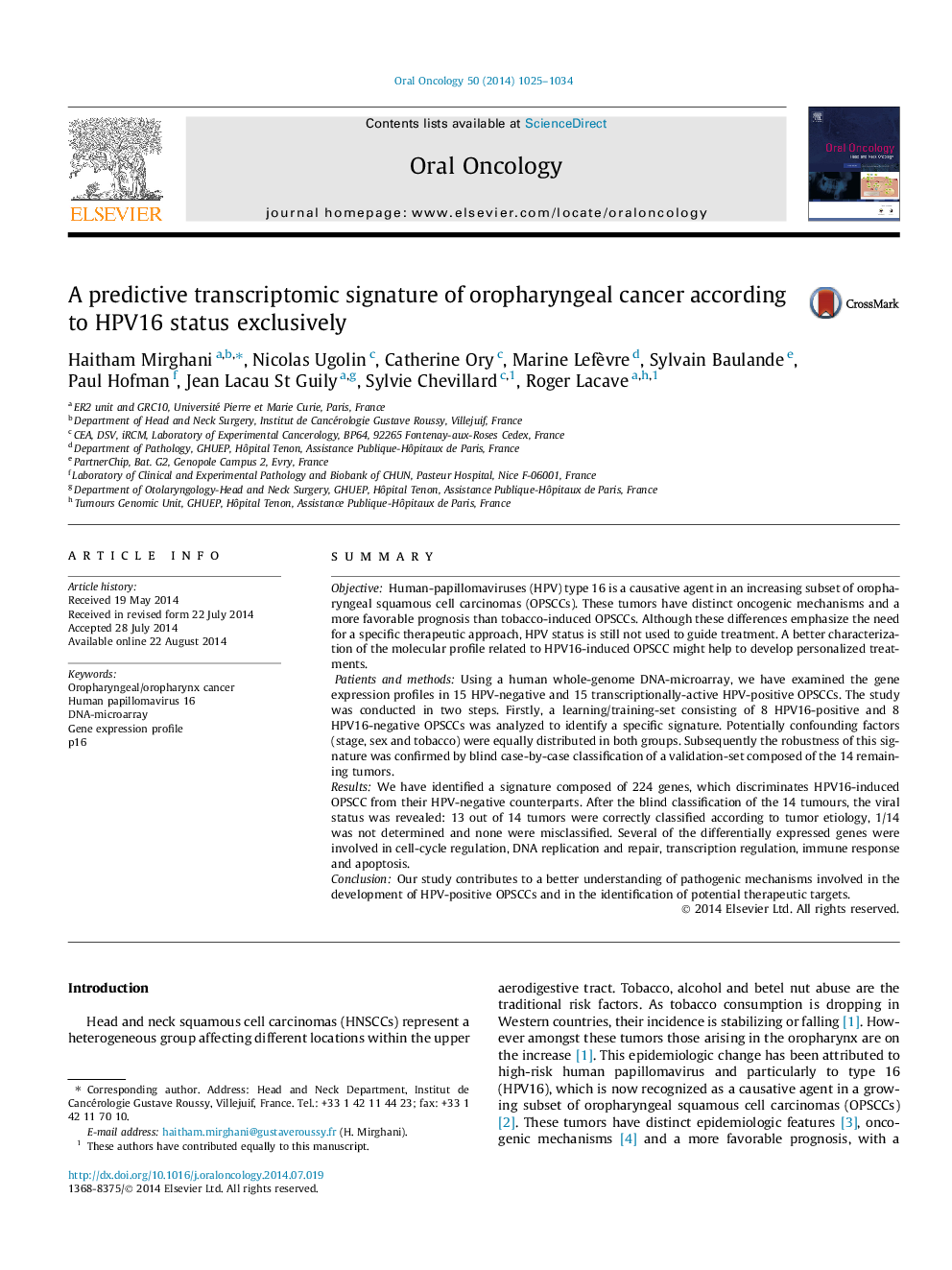| کد مقاله | کد نشریه | سال انتشار | مقاله انگلیسی | نسخه تمام متن |
|---|---|---|---|---|
| 3164020 | 1198764 | 2014 | 10 صفحه PDF | دانلود رایگان |

SummaryObjectiveHuman-papillomaviruses (HPV) type 16 is a causative agent in an increasing subset of oropharyngeal squamous cell carcinomas (OPSCCs). These tumors have distinct oncogenic mechanisms and a more favorable prognosis than tobacco-induced OPSCCs. Although these differences emphasize the need for a specific therapeutic approach, HPV status is still not used to guide treatment. A better characterization of the molecular profile related to HPV16-induced OPSCC might help to develop personalized treatments.Patients and methodsUsing a human whole-genome DNA-microarray, we have examined the gene expression profiles in 15 HPV-negative and 15 transcriptionally-active HPV-positive OPSCCs. The study was conducted in two steps. Firstly, a learning/training-set consisting of 8 HPV16-positive and 8 HPV16-negative OPSCCs was analyzed to identify a specific signature. Potentially confounding factors (stage, sex and tobacco) were equally distributed in both groups. Subsequently the robustness of this signature was confirmed by blind case-by-case classification of a validation-set composed of the 14 remaining tumors.ResultsWe have identified a signature composed of 224 genes, which discriminates HPV16-induced OPSCC from their HPV-negative counterparts. After the blind classification of the 14 tumours, the viral status was revealed: 13 out of 14 tumors were correctly classified according to tumor etiology, 1/14 was not determined and none were misclassified. Several of the differentially expressed genes were involved in cell-cycle regulation, DNA replication and repair, transcription regulation, immune response and apoptosis.ConclusionOur study contributes to a better understanding of pathogenic mechanisms involved in the development of HPV-positive OPSCCs and in the identification of potential therapeutic targets.
Journal: Oral Oncology - Volume 50, Issue 11, November 2014, Pages 1025–1034